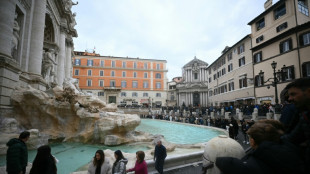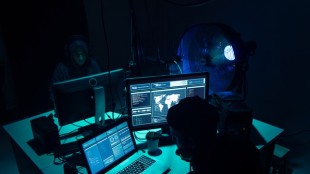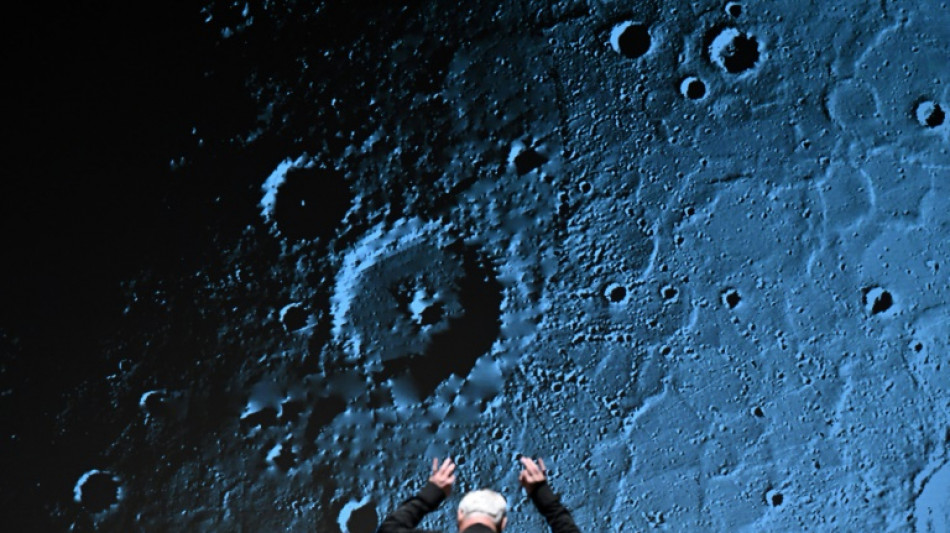
-
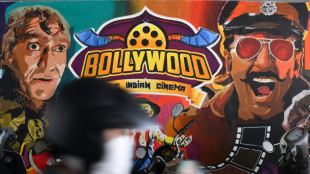 India's Bollywood counts costs as star fees squeeze profits
India's Bollywood counts costs as star fees squeeze profits
-
McCullum admits errors in Ashes preparations as England look to salvage pride

-
 Pets, pedis and peppermints: When the diva is a donkey
Pets, pedis and peppermints: When the diva is a donkey
-
'A den of bandits': Rwanda closes thousands of evangelical churches

-
 Southeast Asia bloc meets to press Thailand, Cambodia on truce
Southeast Asia bloc meets to press Thailand, Cambodia on truce
-
As US battles China on AI, some companies choose Chinese

-
 AI resurrections of dead celebrities amuse and rankle
AI resurrections of dead celebrities amuse and rankle
-
Steelers receiver Metcalf strikes Lions fan

-
 Morocco coach 'taking no risks' with Hakimi fitness
Morocco coach 'taking no risks' with Hakimi fitness
-
Gang members given hundreds-years-long sentences in El Salvador

-
 Chargers, Bills edge closer to playoff berths
Chargers, Bills edge closer to playoff berths
-
Gang members given hundred-years-long sentences in El Salvador

-
 Hosts Morocco off to winning start at Africa Cup of Nations
Hosts Morocco off to winning start at Africa Cup of Nations
-
No jacket required for Emery as Villa dream of title glory

-
 Amorim fears United captain Fernandes will be out 'a while'
Amorim fears United captain Fernandes will be out 'a while'
-
Nigerian government frees 130 kidnapped Catholic schoolchildren

-
 Captain Kane helps undermanned Bayern go nine clear in Bundesliga
Captain Kane helps undermanned Bayern go nine clear in Bundesliga
-
Captain Kane helps undermanned Bayern go nine clear

-
 Rogers stars as Villa beat Man Utd to boost title bid
Rogers stars as Villa beat Man Utd to boost title bid
-
Barca strengthen Liga lead at Villarreal, Atletico go third

-
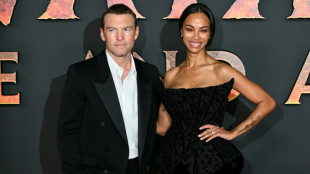 Third 'Avatar' film soars to top in N. American box office debut
Third 'Avatar' film soars to top in N. American box office debut
-
Third day of Ukraine settlement talks to begin in Miami
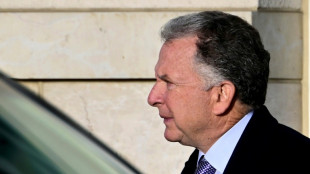
-
 Barcelona's Raphinha, Yamal strike in Villarreal win
Barcelona's Raphinha, Yamal strike in Villarreal win
-
Macron, on UAE visit, announces new French aircraft carrier

-
 Barca's Raphinha, Yamal strike in Villarreal win
Barca's Raphinha, Yamal strike in Villarreal win
-
Gunmen kill 9, wound 10 in South Africa bar attack

-
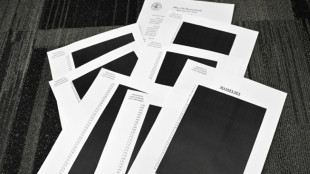 Allegations of new cover-up over Epstein files
Allegations of new cover-up over Epstein files
-
Atletico go third with comfortable win at Girona

-
 Schwarz breaks World Cup duck with Alta Badia giant slalom victory
Schwarz breaks World Cup duck with Alta Badia giant slalom victory
-
Salah unaffected by Liverpool turmoil ahead of AFCON opener - Egypt coach

-
 Goggia eases her pain with World Cup super-G win as Vonn takes third
Goggia eases her pain with World Cup super-G win as Vonn takes third
-
Goggia wins World Cup super-G as Vonn takes third

-
 Cambodia says Thai border clashes displace over half a million
Cambodia says Thai border clashes displace over half a million
-
Kremlin denies three-way US-Ukraine-Russia talks in preparation

-
 Williamson says 'series by series' call on New Zealand Test future
Williamson says 'series by series' call on New Zealand Test future
-
Taiwan police rule out 'terrorism' in metro stabbing

-
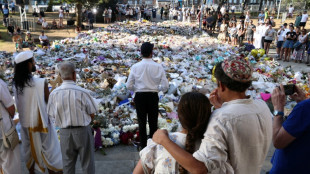 Australia falls silent, lights candles for Bondi Beach shooting victims
Australia falls silent, lights candles for Bondi Beach shooting victims
-
DR Congo's amputees bear scars of years of conflict

-
 Venison butts beef off menus at UK venues
Venison butts beef off menus at UK venues
-
Cummins, Lyon doubts for Melbourne after 'hugely satsfying' Ashes
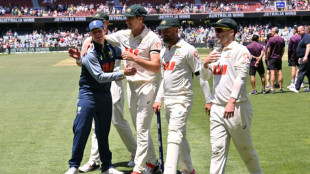
-
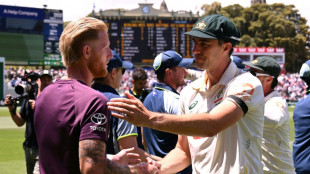 'It sucks': Stokes vows England will bounce back after losing Ashes
'It sucks': Stokes vows England will bounce back after losing Ashes
-
Australia probes security services after Bondi Beach attack
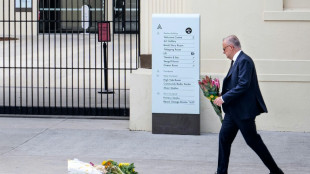
-
 West Indies need 462 to win after Conway's historic century
West Indies need 462 to win after Conway's historic century
-
Thai border clashes displace over half a million in Cambodia

-
 Australia beat England by 82 runs to win third Test and retain Ashes
Australia beat England by 82 runs to win third Test and retain Ashes
-
China's rare earths El Dorado gives strategic edge

-
 Japan footballer 'King Kazu' to play on at the age of 58
Japan footballer 'King Kazu' to play on at the age of 58
-
New Zealand's Conway joins elite club with century, double ton in same Test

-
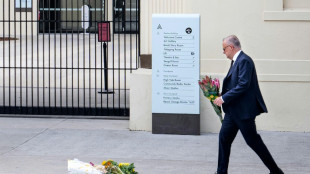 Australian PM orders police, intelligence review after Bondi attack
Australian PM orders police, intelligence review after Bondi attack
-
Durant shines as Rockets avenge Nuggets loss


US 'space symphony' puts stunning NASA images to music
It could be the ultimate blend of art and science -- a new seven-suite "space symphony" inspired and illustrated by NASA's latest mind-boggling images.
The world premiere outside Washington last week of "Cosmic Cycles" showcased vivid imagery compiled by the US space agency alongside the first-ever public performance of the music.
Henry Dehlinger, the symphony's American composer, describes it as "almost like a total artwork."
"It's not just music, it's not just visuals -- it's not a score for a film either," the 56-year-old told AFP before the concert.
"It's more of an immersive experience that encapsulates both visuals and sound."
A similar effort was undertaken over a century ago by English composer Gustav Holst -- but when he wrote his famous ode to "The Planets," much in astronomy remained only theoretical.
Since then, humans have walked on the Moon, sent roving research labs to Mars and probed across the solar system with powerful telescopes allowing us to peer billions of light-years away.
The images from that research, compiled by NASA producers into seven short films, served as the inspiration for Dehlinger.
"I had to almost pinch myself and remind myself that this isn't pretend -- this is the real deal. Not science fiction, it's the actual science," he said.
Piotr Gajewski, music director and conductor of the National Philharmonic, explained that the idea for the project came after previous work with NASA on visuals to go with a double-billing of Claude Debussy's "La Mer" ("The Sea") and Holst's "The Planets."
For their next collaboration, 64-year-old Gajewski said he suggested to NASA "that we turn the tables on them."
"Rather than them getting a piece of music and putting pictures to it, that they start by putting short videos together... of their very, very best work."
For Wade Sisler, executive producer at NASA's Goddard Space Flight Center, the challenge was worth the effort.
"It's a journey unlike one that I have ever helped anyone take," Sisler, 64, told AFP.
- 'Like Van Gogh paintings' -
The seven-part piece begins at the heart of our solar system -- the Sun -- with shots of its swirling and gurgling surface, and explosions of particles out to the planets.
The next two movements focus on NASA studies of our home planet, from a global perspective and then through Earth photographs taken by astronauts in orbit.
Apart from photos and videos, interspersed throughout the seven films are a "mesmerizing collection of data visualizations" created by NASA, Sisler explained.
Data on ocean currents, for example, "look like Van Gogh paintings when you put them in motion. The colors are beautiful, you see patterns that you never realized before."
A fourth segment on the Moon is followed by profiles of each planet -- including a focus on images of the Martian surface taken by NASA rovers.
Jupiter, a "regal subject" according to Dehlinger, is introduced by roaring chimes and horns.
The symphony also takes a detailed look at recent experiments on asteroids before a big finale of nebulae, black holes and other galactic phenomena.
In addition to two performances at venues outside Washington, NASA has released the videos to its YouTube page with a synthesized version of Dehlinger's soundtrack.
- 'A great mystery' -
To hammer home the equal importance of the music and video, conductor Gajewski explained, they decided not to aim for exact synchronization, but to be more "fluid."
That approach allows him "to find some moments that are different each time and each performance."
"We really wanted people to be able to experience the music, the performers themselves, and also the science in a balanced portfolio," Sisler added.
Knowing the images and missions were real, Sisler said, elicits a stronger audience response in the digital age, when "you can conjure up anything through AI, conjure up anything in digital effects."
"People are interested in real results. Like 'wow, we really went to that asteroid. Wow, we’re really bringing it back here to Earth,'" he said, referring to the daring OSIRIS-REx sample retrieval mission.
That awe-inspiring factor made the images perfect companions to orchestral pieces, Gajewski said.
"What is it that all of a sudden makes us emotionally weak when we hear one kind of music, or proud when we hear different kinds?" he asked.
"It's all a great mystery, and of course space is the other great mystery, so they complement each other very well."
D.Moore--AMWN
